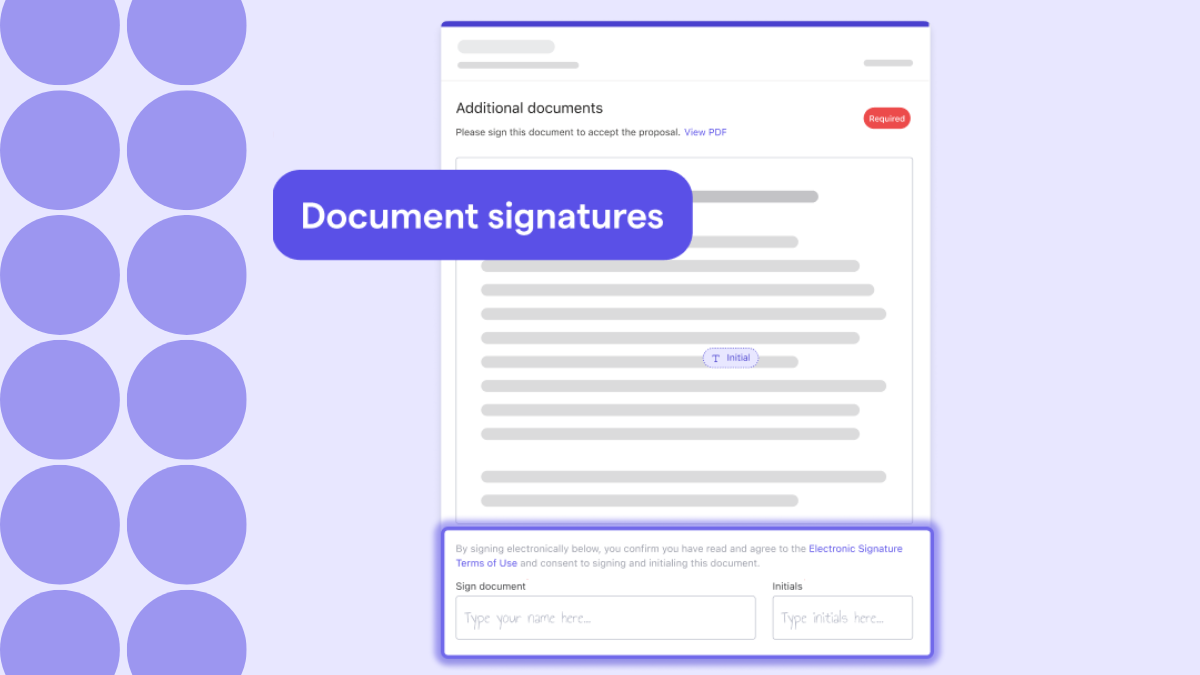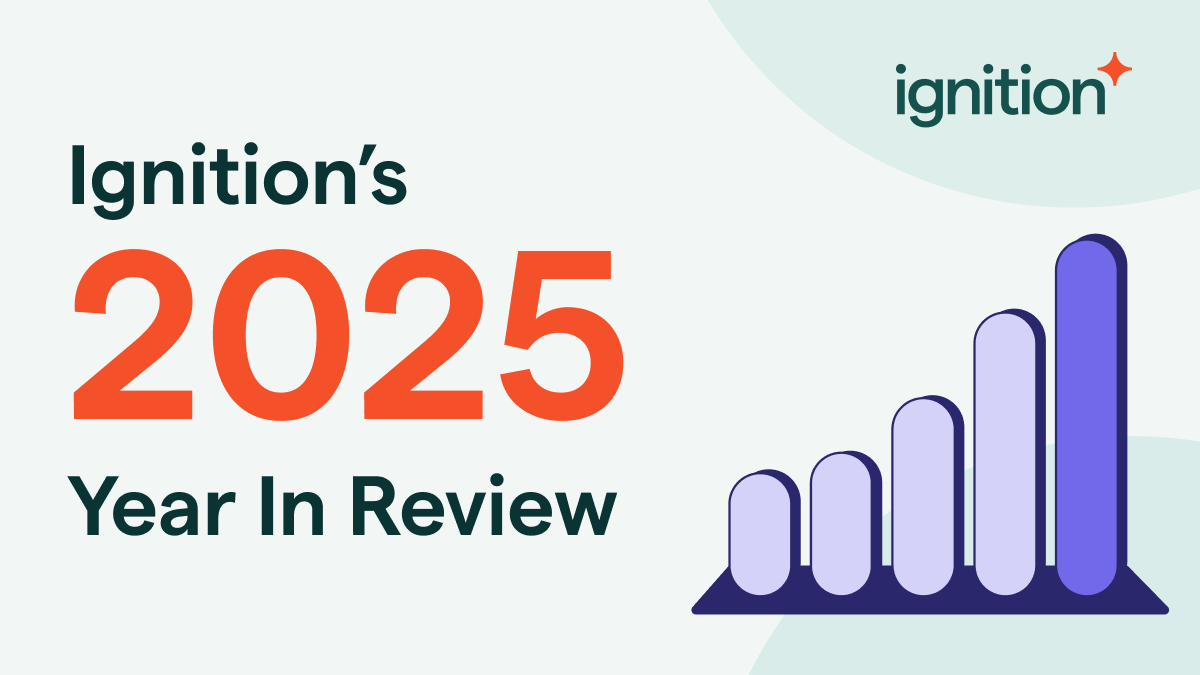What is an engagement letter? And why is it important?
Everything you need to know about engagement letters for accounting — plus a free template you can start using today.

Key takeaways
- An engagement letter is a vital legal contract that sets clear expectations between your firm and your clients, ensuring you get paid for your services and reducing legal risks.
- Engagement letters are essential for protecting against non-payment, liability for client misconduct like tax fraud, and scope creep.
- Engagement letters help set clear expectations, avoid unpaid extra work, and get your new client relationships off to a good start.
- Using templates and automation can save time and reduce administrative overhead when creating and managing engagement letters.
- Having a standardized process for engagement letters can streamline your operations and ensure consistency across client engagements. Ignition includes a free engagement letter template with NATP standard engagement terms.
Building a strong relationship with a new accounting client is easier when you start with strong, clear terms, and an easy way to agree to them. Are you tired of wondering if your clients fully understand your services and expectations? Enter engagement letters, a crucial tool for accountants and bookkeepers looking to grow their business and mitigate risk. Presenting a high-quality engagement letter at the beginning of your new client contract is a great way to kick things off. When combined with proposals, engagement letters ensure smooth client onboarding and help protect against legal or payment issues down the line.
In this article, we’ll show you exactly what you should put in your engagement letter, why it’s beneficial to use one, and how to streamline the process with automation and e-signature.
- What is an engagement letter?
- Proposals vs. engagement letters
- Why do I need an engagement letter?
- What should be included in an engagement letter?
- How to format your engagement letter
- Sample engagement letter template
- Instantly send engagement letters and get them signed
- Automate your manual processes and free up time
1. What is an engagement letter?
An engagement letter is a contract between your company and your client. It outlines the terms and conditions agreed upon at the start of a business relationship, including the scope of work, fees, and legal stipulations such as limitation of liability and record retention. This document is essential because it ensures that both parties have a clear understanding of the services to be provided, the responsibilities of each party, and the compensation to be paid.
Your engagement letter also serves as a formal acknowledgment of the agreement between both parties, reducing the likelihood of disputes arising from misunderstandings. It lays the groundwork for a transparent and professional relationship, where both the service provider and the client have a clear understanding of their obligations and rights.
Engagement letters also include signature lines for acknowledgment, ensuring that both parties formally agree to the terms outlined before any work begins. Once your engagement letter is signed, work can kick off without as much worry about not getting paid at all, getting sued, or being asked to do extra work without getting paid for it.
One common issue accountants face is scope creep — clients asking for extra work without paying for it. Engagement letters protect you from this by clearly stating the scope of the services provided. If additional services are requested, the letter can be amended to ensure you're compensated for the extra work.
2. Proposals vs. engagement letters
In the accounting world, there is often confusion between proposals and engagement letters, with some mistakenly using the terms interchangeably — but they serve different purposes. A proposal is primarily a sales document that persuades a potential client to choose your firm, detailing your services, expertise, and why they should choose you.
While a proposal is focused on showcasing your services and convincing a client to engage with your firm, an engagement letter is a legal document that sets the terms of the agreement, including the scope of work and other contractual terms. This distinction is important because, while a proposal can help you win clients, the engagement letter ensures that the relationship is governed by clear and enforceable terms.
By incorporating the engagement letter into your proposal, you can streamline the process, making it easier for clients to transition from consideration to commitment. By the time they get to the engagement letter, your prospect will better understand what you provide and might be more likely to sign.
With Ignition, you not only enjoy access to automated engagement letters that you can send to clients in minutes, but you also have online proposals and proposal templates. Combining the power of automated engagement letters and proposals not only saves time and helps sign on new clients with ease, but also helps to avoid any potential miscommunication with your clients. By presenting your engagement letter and proposal together, you are clearly outlining the next steps, ensuring that there is no ambiguity in your client agreement.

3. Why do I need an engagement letter?
Many accountants may feel that engagement letters are unnecessary, especially if their clients rarely read them in full. But there are plenty of good reasons to use engagement letters.
First off, an engagement letter is your first line of defense against non-payment, client fraud, and liability issues. When starting work with a new client, the engagement letter ensures that you’re legally entitled to get paid for the services you provide, with a signature to back it up. It also protects you from liability and being charged for any potential illegal activities that your client is performing without your knowledge.
Without an engagement letter, you risk misunderstandings about the services you will provide, which could lead to disputes and even legal challenges. The engagement letter ensures that you are legally entitled to payment for your services and provides a written record of the agreed-upon terms, protecting you from liability.
But it goes beyond protection, too. The engagement letter can enhance your client relationships by setting clear expectations from the outset and offers a chance to add a personalized touch This transparency can prevent scope creep — where clients request additional services outside the original agreement without additional compensation. If such situations arise, the engagement letter can be quickly amended, ensuring you get paid for the extra work.

4. What should be included in an engagement letter?
Many accounting firms are unsure if their engagement letter truly covers all their bases. At Ignition, we’ve partnered with the National Association of Tax Professionals (NATP) to create an industry-standard engagement letter template that has everything most accountants need (more on this later). But to give you a general picture, these are items you should include:

- Purpose, Scope, and Output: Clearly define the services you will provide and the expected deliverables to prevent scope creep.
- Handling Unanticipated Services: Outline how additional services outside the scope of the initial agreement will be handled.
- Billing and Payment Terms: Specify how and when you will bill your client, including details about retainers if applicable.
- Limitation of Liability: Include language that limits your liability for certain issues, such as errors in client-provided information.
- Confidentiality and Disclosure: Protect client information while noting any legal obligations for disclosure to authorities like the IRS.
- Governing Law: State that the agreement is subject to the laws of your state and outline how disputes will be resolved.

5. How to format your engagement letter
How you format your engagement letter really depends on how you intend to deliver it. You can go old school and print out a PDF with a signature line for them to sign, or you can go modern and use an electronic signature document system. But there are even more modern ways than that. Here are your options:
- Word to PDF: A lawyer can draft a standard engagement letter to save in a Word document. You can make changes for each client, including their company information, dates, and any special changes you need to make. Then, you convert to PDF, print, and get the hard copy signed and filed away. The biggest challenge here is you will continually have to update the original draft document and will require in-person client signatures.
- Electronic Document Systems: Document management software like DocuSign or Adobe Sign is a step up from the first option since they allow for electronic signatures, which can speed up the process and make your firm appear more professional. These tools also allow you to save templates and add your own design. The catch is this is not an all-in-one engagement letter solution and will still require some manual work.
- Integrated Digital Proposals: Solutions like the Ignition App combine proposals with engagement letters in a seamless digital format. Along with your custom engagement letter, your full proposal will include a cover letter, brochure, your services, package options, payment set up, and e-signature capabilities to start your engagement. This is all built with pre-made templates and delivered digitally and is the fastest and most comprehensive option.
By choosing a modern, digital approach to engagement letters, you can save time, reduce errors, and provide a more convenient experience for your clients. It’s important to consider the user experience when designing your engagement letters. A well-formatted letter that is easy to read and navigate can significantly improve the likelihood that your clients will review and understand the terms. This not only reduces the risk of disputes but also enhances client satisfaction by making the process as smooth and straightforward as possible.
6. Sample engagement letter templates
Creating a comprehensive and legally sound engagement letter from scratch can be daunting. Fortunately, Ignition offers a pre-built engagement letter template, developed in partnership with the NATP, that covers all the essential elements that most accounting firms need. Just like our proposal templates, it can be customized to fit your specific requirements.

The template includes sections for defining the scope of work, outlining billing procedures, and limiting liability, among others. By using this template, you can ensure that your engagement letter is thorough and compliant with industry standards, while also saving on legal fees.
Using a standardized template not only saves time but also ensures that all necessary legal and regulatory considerations are addressed. This is particularly beneficial for firms that handle a large volume of clients, as it provides a consistent approach to client engagement, reducing the risk of errors or omissions.
7. Instantly send engagement letters and get them signed
Engagement letters are crucial for reducing your business risk and setting clear terms with your clients. Ignition makes it easy to manage this process by offering templated engagement letters that can be customized, sent, and signed quickly via e-signature.
One of the key advantages of using digital tools for engagement letters is the ability to track and manage them effectively. With Ignition, you can monitor the status of each engagement letter, see who has signed, and even automate reminders for clients who have yet to complete the process. This level of oversight helps to ensure that no engagement falls through the cracks, allowing your firm to maintain a high level of professionalism and efficiency.
8. Automate your manual processes and free up admin time
If you’re a busy accountant or bookkeeper, Ignition removes the pain of time-consuming and repetitive admin to free up your valuable time. You can create and send proposals and engagement letters in minutes with custom templates you can use time and again.
You can also automate billing and payment collection based on your billing and fee schedule, and ‘set and forget’ once a client signs your proposal.
Ignition can save you hours of admin time by connecting it to your business apps to automate workflows from the moment your client signs the proposal. Automate invoice creation and reconciliation by integrating Ignition with Quickbooks Online or Xero, so everything happens seamlessly behind the scenes.
Over to you: Automate your manual processes and free up admin time
To learn more about how Ignition can not only make the engagement process smoother for your firm – but also streamline many other aspects of your business – watch a demo or start your free trial membership today.



